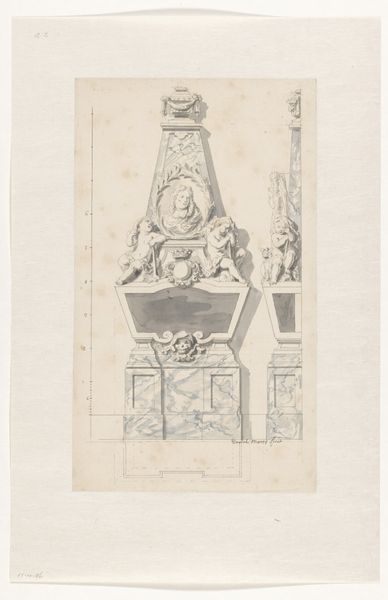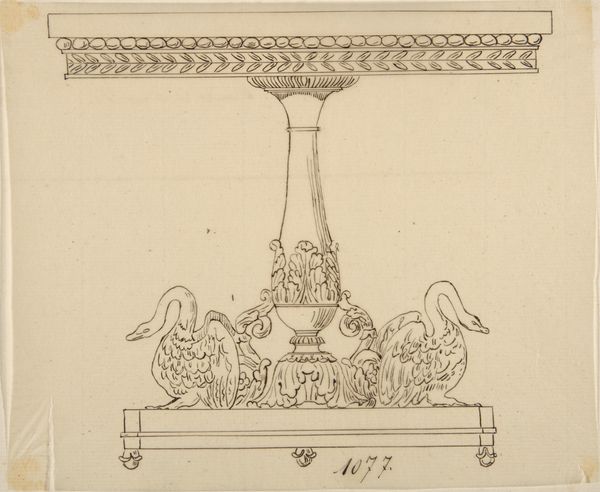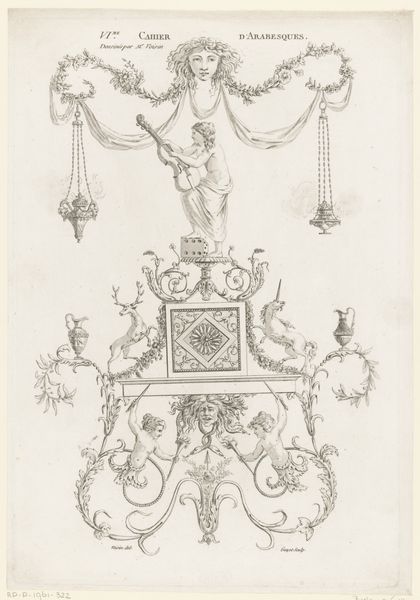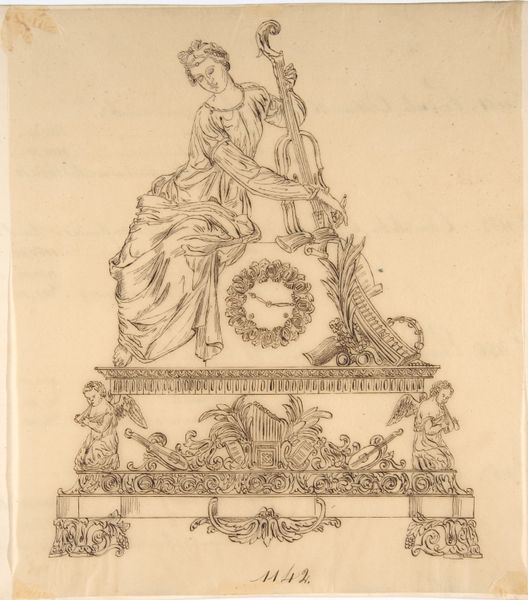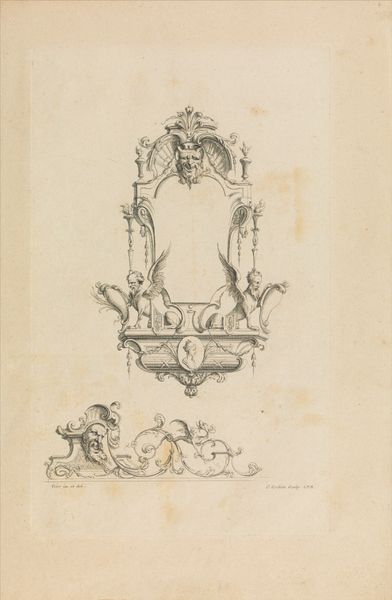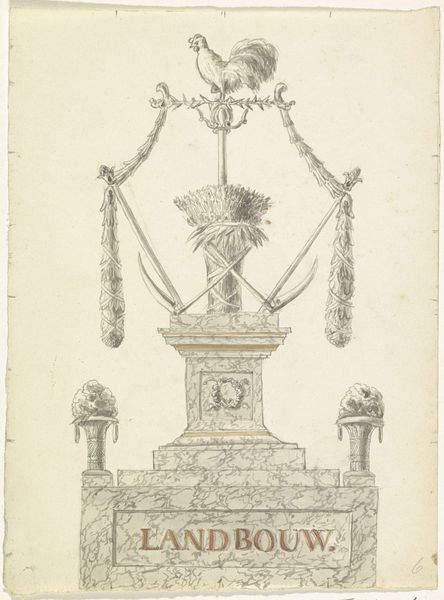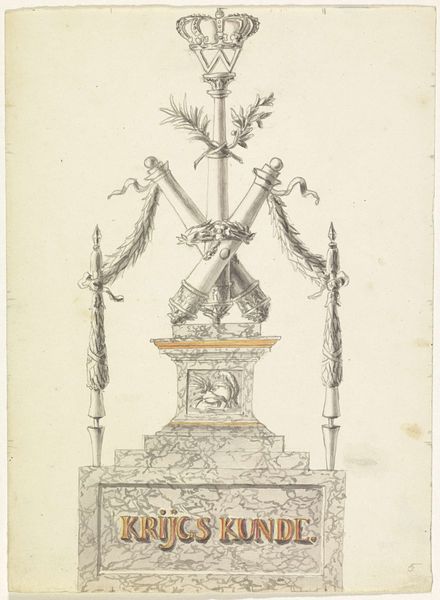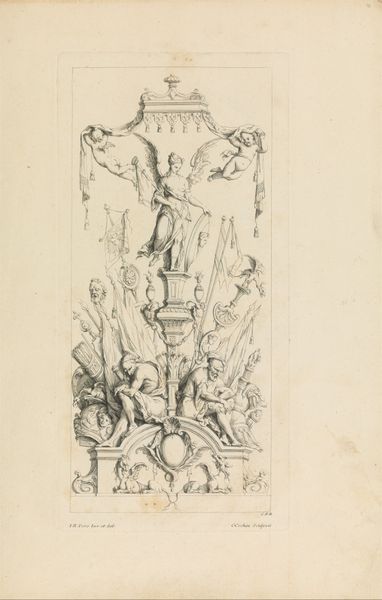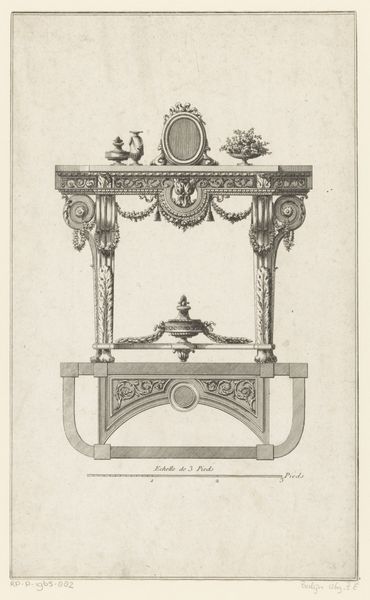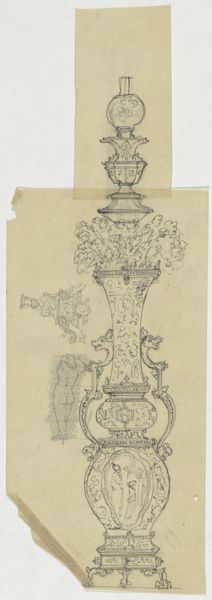
drawing, print, pencil, pen
#
drawing
#
neoclacissism
# print
#
pen sketch
#
pencil sketch
#
form
#
geometric
#
pencil
#
line
#
pen work
#
pen
#
decorative-art
Dimensions: sheet: 10 3/4 x 6 1/8 in. (27.3 x 15.6 cm)
Copyright: Public Domain
Curator: Well, hello there. Here we have an absolutely darling "Design for a Candelabra" from the 19th century, unsigned, a whimsical dance of pen and pencil on paper. Don't you just adore the line work? Editor: Immediately, I'm struck by the materiality, or rather the implied materiality. It’s a drawing, a blueprint of something meant to be solid, functional, even luxurious. Look at those supporting figures—are they meant to be carved marble? Heavy metal? Curator: Ooh, "blueprint," I like that. It does give off that workshop vibe, doesn’t it? Like peering into the mind of a maker, dreaming up light and form. Those figures—they’re like little Caryatids, ancient Greek support columns in female form, forever frozen in elegant service. Except here, they’re sort of half-human, half-animal…Sphinx-like? Editor: Exactly. And considering the era, you have to wonder about the social context, the labor that would’ve gone into crafting such an ornate object. A candelabra wasn’t just a source of light; it was a statement of wealth and taste. Who were the artisans who would bring this drawing to life? Curator: Yes! The *making* of it— the anonymous hands, the hours, the sheer skill to coax such detail from raw materials. And all those little flourishes, the swags of foliage, the geometric precision— it all speaks to that Neoclassical obsession with order and beauty, with echoes of grand empires and sun-drenched villas. Editor: And how does this design engage with ideas of consumption and status? These objects weren't just decorative. They played a crucial role in performances of power. Whose table would this have graced? Whose shadows would have danced around its light? It provokes questions about accessibility and use of the finished piece in relation to the artist, design and labor involved in its possible making. Curator: I think that imagining a candlelit gathering brings us a step closer to understanding the ephemeral dance of dreams and possibilities the designer had while working on this pen sketch. You have given me a renewed vision on this piece through understanding the labour and power that hides within it. Editor: Ultimately, analyzing "Design for a Candelabra," for me means revealing a fascinating narrative of skill, ambition, and social position embedded in what at first seems to be simply a decorative piece.
Comments
No comments
Be the first to comment and join the conversation on the ultimate creative platform.

